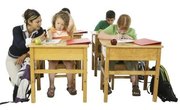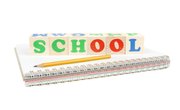Each student has different strengths in the classroom. When combined together, both formal and informal education create a multi-layered web of learning for a child. There are significant differences between formal and informal education. However they both assist in how a child digests and uses all the information both in and out of the formal school setting.
Main Difference Between Formal and Informal Education
The main difference between formal and informal education is that a formal education is what most people think of when they think of school. No matter if the children attend a private or public or religious institution, if they are being taught alongside a group of their peers about the basics of education, reading, writing and arithmetic, then they are in a formal education setting. The classroom-based formal education model has trained teachers that teach a curriculum with the same group of students every day.
When children leave the classroom, they are basically entering informal education. The world around them helps to shape their perspective on important issues as well as how to behave outside of a rigid system such as the classroom. After-school programs are an example of informal education.
Difference in Activities
The activities planned by the teacher for the students in formal education can last weeks or months, depending on the age of the students and the requirement of the lesson. With informal education, such as in after-school programs or children’s clubs, activities are often short and completed within a few minutes or by the end of the program day.
Children aren’t always in the same groups of peers in informal education settings mainly because attendance isn’t always strictly required. The informal education providers may not be trained and are flexible in their content compared to teachers who need to stick to a preset curriculum with formal education. The less rigid environment in after-school programs and other informal education outreach programs can help a child struggling in school to soar.
Difference in Education Providers
The formal education definition, simply put, is that trained teachers provide specific curriculum based on age to a group of children in the same classroom daily. Teachers in formal education are trained for that age group and are required to offer lessons that will assist the child in passing the grade and moving forward with peers.
The rigors of a curriculum that the teacher is required to teach can cut back on nontraditional content that can spark imagination in a child who does not respond well to the structure of a classroom. Teachers are also trained in effective teaching strategies, so they can offer children who are struggling different ways to excel based on their specific needs. Education providers in informal education settings can be more involved with individual students and assist in their education pursuits.
Related Articles
References
Writer Bio
Kimberley McGee is an award-winning journalist with 20+ years of experience writing about education, jobs, business and more for The New York Times, Las Vegas Review-Journal, Today’s Parent and other publications. She graduated with a B.A. in Journalism from UNLV. Her full bio and clips can be seen at www.vegaswriter.com.










